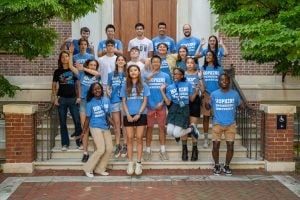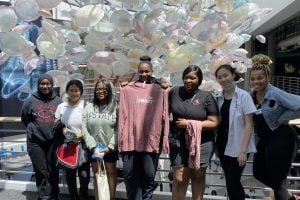
Taught and mentored by Hopkins undergraduates majoring in biomedical engineering and applied math, the middle schoolers learned about topics ranging from neurons to prosthetics, and tested models demonstrating these principles over the course of five weeks earlier this winter.
On February 27—the students’ last Saturday here and the final day of National Engineers Week—the students learned about brain anatomy and how concussions/traumatic brain injuries occur. In an experiment meant to simulate conditions under which concussions can be produced, they designed and tested helmets constructed to protect hard-boiled-egg “brains” from shattering when hit.
The outreach effort was led by Margaret Hart of the Whiting School’s Center for Educational Outreach.
Hart said that although the program focused on exposing students to biomedical engineering as a possible career choice, “It also helped the students cultivate important design skills, such as problem solving and critical thinking, that can be applied to everyday life.”
In November, Hopkins and Baltimore City Public Schools partnered to create at Barclay the city’s first pre-K through eighth grade school dedicated to giving students a foundation in engineering and computer skills. Barclay is also one of nine city elementary schools to benefit from STEM Achievement in Baltimore Elementary Schools—SABES for short—that enhances teaching and learning in science, technology, engineering, and math in city elementary schools by making STEM a community affair. Funded by a five-year, $7.4 millon National Science Foundation grant, SABES is a partnership between Johns Hopkins and Baltimore City Public Schools. The grant and program were announced in 2012.


